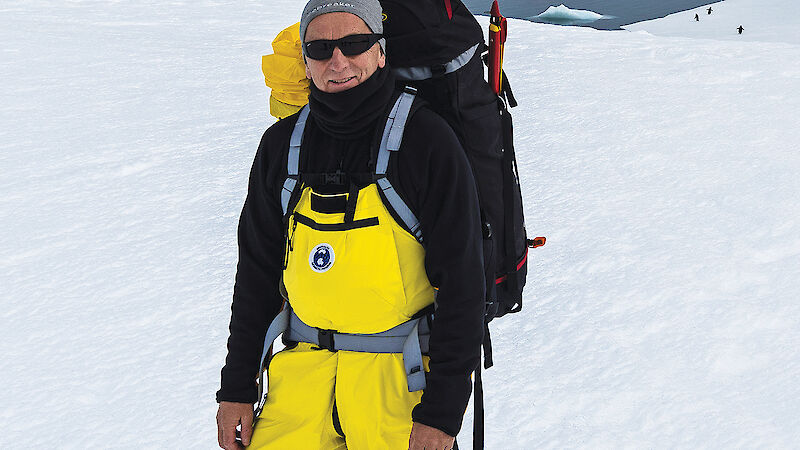The Australian Antarctic Division has been on an exciting journey these past six months as we work towards fulfilling a range of commitments under our Antarctic Strategy and 20 Year Action Plan. Among the highlights were the first steel cutting and subsequent keel laying for our new Antarctic icebreaker, and the announcement of the winners of our ‘Name our Icebreaker’ competition.
By the time you read this the competition winners — six secondary students from Tasmania and six primary students from Western Australia — will have made history, by being the first students to fly to Wilkins Aerodrome and spend time on the ice.
We put a lot of faith in Australian school students to name the vessel, which will be a critical component of Australia’s Antarctic program for the next 30 years, and they did not disappoint.
The winning name, RSV Nuyina (pronounced “noy-yee-nah”) means “southern lights” in palawa kani, the language of Tasmanian Aborigines. It’s a wonderful name for so many reasons. It continues the theme of naming ships after the shimmering curtains of light, including Sir Douglas Mawson’s first ship Aurora and our current icebreaker Aurora Australis. It also celebrates the views of the children — more than 20 per cent of competition entries suggested an Aboriginal name — and it reminds us of the links between Tasmania and Antarctica and when, some 200 000 years ago, Tasmanian Aborigines would have seen the southern lights.
We have also made great strides towards the development of an overland traverse capability and associated mobile station, to support deep-field scientific research, including the million year ice core drilling project. Last season, two of our team spent a good part of their summer on traverse with British and French teams, studying the different traverse technologies and methodologies employed by each program. The Australian team is now working to recommend a way forward. Up until the early 2000s, Australia had some 40 years’ experience undertaking heavy traverses, and it will be exciting to reinvigorate this expertise.
In September we completed the final phase of a ‘proof of concept’ to deliver supplies to Antarctica outside the summer shipping season, using the Royal Australian Air Force’s C-17A aircraft. A mid-air refuelling enabled the aircraft to make the 10 000km round trip between Hobart and Davis research station and drop nine tonnes of cargo to isolated expeditioners. The capability will allow us to pre-position equipment and supplies for station and science projects, saving valuable time when the summer season gets underway.
This 2017–18 season is shaping up to be a busy time for our scientists. The Aurora Australis recently had a ‘facelift’, to strengthen one of her decks to accommodate an additional seven tonnes of atmospheric instruments. As the ship plies the Southern Ocean between October and April, the instruments will gather information on clouds and aerosols. Collaborators from the United States will also fly transects over the Southern Ocean, and the ship, for six weeks, in an instrumented aircraft. Together, the data will help us understand the occurrence of supercooled water clouds — which remain as liquid water at temperatures well below freezing — and improve how clouds are represented in climate models.
Two teams of glaciologists will also return to the Totten and Sørsdal glaciers this season to continue important work on the fundamental processes driving ice shelf thinning. Last season both teams deployed equipment to monitor glacial processes and this season should see a good collection of data retrieved.
Finally, you’ll find a range of interesting historical stories about Antarctic life and culture in this issue. Films, field vans and motorbikes helped expeditioners enjoy well-earned breaks in a life far from loved ones, and to explore the Antarctic environment. These diversions still exist, albeit in a more modern form. While many aspects of our program modernise, some things stay the same.
Dr Nick Gales
Director, Australian Antarctic Division

